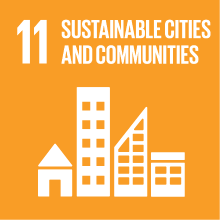ETRUSCOLOGY AND ITALIC ARCHAEOLOGY - II
- Academic year
- 2023/2024 Syllabus of previous years
- Official course title
- ETRUSCOLOGIA E ARCHEOLOGIA ITALICA II
- Course code
- FT0073 (AF:444523 AR:250556)
- Teaching language
- Italian
- Modality
- On campus classes
- ECTS credits
- 6 out of 12 of ETRUSCOLOGY AND ITALIC ARCHAEOLOGY
- Degree level
- Bachelor's Degree Programme
- Academic Discipline
- L-ANT/06
- Period
- 2nd Term
- Moodle
- Go to Moodle page
Contribution of the course to the overall degree programme goals
Objectives of the course are: to develop the ability to think about the dynamics of formation and development of the Etruscan civilization and of ancient Italy, also from different points of view. It aims to provide the methodology for the analysis of archaeological contexts also in comparison one with each other.
Expected learning outcomes
- To know basic archaeological and technical terminology
- To Know Italic chronology relative and absolute
- To know main theoretical models to analize settelments and necropolis
- To Know main theoretical models to analize material culture and social organization
2. Ability to apply knowledge and understanding
- To be able to employ archaeological and technical terminology
- To be able to apply chronological references for the Italic Iron age
- To be able to analyze some case studies for settlements and necropolis
- To be able to analyze examples of material culture and artistic finds
3. Judgment skills
- To be able to judge and argue hypothesis about etrusco-italic contexts
4. Communication skills
- To be able to tell new finds or results of the research with a plain and technical terminology
- to be able to compare themselves with colleagues and tutor, even in virtual way
5. Learning ability
- To be able to take notes and to share them with colleagues, even on line
- To be able to consult bibliographic references even with a critical point of view
Pre-requirements
Contents
Referral texts
G. Colonna 1985, I caratteri costanti; Dalla casa al tempio; Il tempio come categoria architettonica; I santuari urbani; I santuari suburbani; I santuari extraurbani, in Santuari d’Etruria, Milano, pp. 23-27; 53; 60-61; 67-69; 98-99; 127.
M. Torelli 2000, La religione etrusca, in Gli Etruschi, Milano, pp. 273-289.
G. Gambacurta 2013, Uomini e dei, in Venetkens. Viaggio nella terra dei Veneti antichi, Venezia, pp. 106-111.
A. Marinetti 2008, Culti e divinità dei Veneti antichi: novità dalle iscrizioni, in I Veneti antichi. Novità e aggiornamenti, Atti Convegno (Isola della Scala 2005), Verona, pp. 155-182.
Insights into cities and worships
Veio:
F. Melis 1985, Veio: l’oikos di Piazza d’Armi, in Santuari d’Etruria, Milano, pp. 58-59.
V. Acconcia, G. Bartoloni 2014, La cittadella di Piazza d’Armi, in Atti PontAccRomArch – Rendiconti, Città del Vaticano, p. 273 ss.; G. Colonna 1985, Santuario in località Portonaccio a Veio, in Santuari d’Etruria, Milano, pp. 99-101; G. Colonna 2008, L’officina veiente: Vulca e gli altri maestri di statuaria arcaica in terracotta, in Etruschi. Le antiche metropoli del Lazio, Milano, pp. 52-63.
Tarquinia e Gravisca:
G. Colonna 1985, Il tempio detto Ara della Regina a Tarquinia, in Santuari d’Etruria, Milano, pp. 70-73; F. Boitani 2008, Gravisca, profilo storico-topografico, in Etruschi. Le antiche metropoli del Lazio, Milano, pp. 149-153; L. Fiorini 2008, Il santuario dei mercanti greci e le feste di Adone a Gravisca, in Etruschi. Le antiche metropoli del Lazio, Milano, pp. 155-161.
Orvieto:
S. Stopponi 1985, Il santuario del Belvedere a Orvieto, in Santuari d’Etruria, Milano, pp. 80-83.
S. Stopponi 2018, Orvieto – Località Campo della Fiera: la scoperta del Fanum Voltumnae, in Scavi d’Etruria, Annali “Claudio Faina” XXXV, Roma, pp. 9-35; S. Stopponi 2019, Orvieto, Etruriae Caput; Orvieto (Terni), il Fanum Voltumnae, in Etruschi. Viaggio nelle terre dei Rasna, Milano, pp. 265-269; 270-277.
Capua:
M. Bonghi Jovino 1985, Capua: il santuario del fondo Patturelli, in Santuari d’Etruria, Milano, pp. 121-123; C. Rescigno 2019, Capua e gli artigiani campani, in Etruschi. Viaggio nelle terre dei Rasna, Milano, pp. 239-243; I. Gennarelli 2019, Curti (Caserta), il santuario di Fondo Patturelli, ibidem, Milano, pp. 249-255.
Cerveteri – Pyrgi:
G. Colonna 1985, Il santuario di Leucotea-Ilizia a Pyrgi, in Santuari d’Etruria, Milano, pp. 127-130; L.M. Michetti, B. Bellelli Marchesini 2018, Pyrgi, porto e santuario di Caere. Tra conoscenze acquisite e ricerche in corso, in Scavi d’Etruria, Annali “Claudio Faina” XXXV, Roma, pp. 245-279; L. M. Michetti 2019, Caere e Pyrgi: la città arcaica nelle sue forme sociali e nascita degli empori, in Etruschi. Viaggio nelle terre dei Rasna, Milano, pp. 161-165.
Marzabotto:
E. Govi 2018, L’area sacra urbana di Marzabotto (R. I, 4-5). Culti e pratiche rituali, in Scavi d’Etruria, Annali Museo “Claudio Faina” XXXV, Roma, pp. 613-651; E. Govi 2019, Marzabotto. La città fondata, in Etruschi. Viaggio nelle terre dei Rasna, Milano, pp. 443-451.
Il Veneto:
A.Ruta Serafini (a cura di) 2002, Este preromana: una città e i suoi santuari, Treviso: A. Maggiani, Luoghi di culto e divinità a Este, pp. 77-87; A. Ruta Serafini, C. Sainati, il “caso Meggiaro” problemi e prospettive, 216-223; L. Capuis, A.M. Chieco Bianchi, Il santuario sud-orientale di Reitia e i suoi devoti, 233-247; H.W. Daemmer, Il santuario sud-orientale. Le indagini recenti; Il santuario lacustre di San Pietro Montagnon, 248-269, 299-305; E. Baggio Bernardoni, Un santuario occidentale? Un problema aperto, 276-280; G. Gambacurta, L. Zaghetto, Il santuario settentrionale, 283-295; L. Zaghetto, Il santuario di Vicenza, 306-320; M. Tirelli, Il santuario di Altino: altno- e i cavalli, 311-320.
Assessment methods
Type of exam
Teaching methods
Lectures and exercises
On.line papers for specific topics.
2030 Agenda for Sustainable Development Goals
This subject deals with topics related to the macro-area "Cities, infrastructure and social capital" and contributes to the achievement of one or more goals of U. N. Agenda for Sustainable Development


